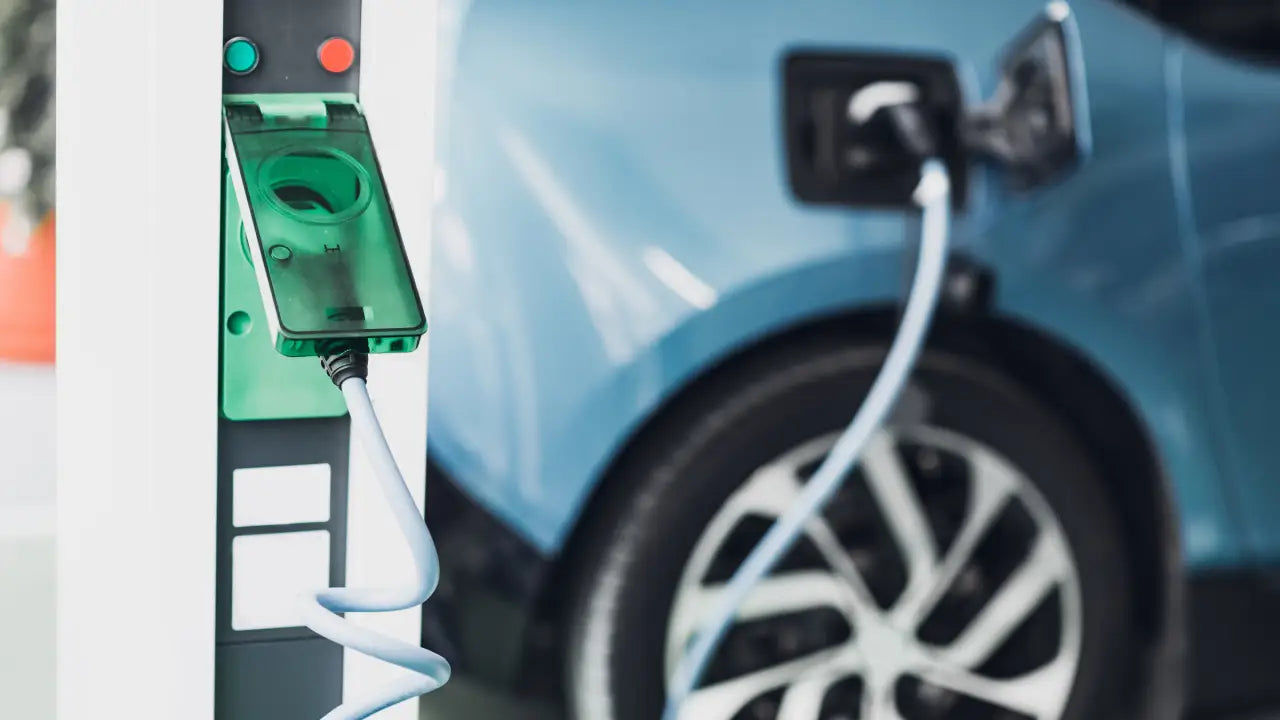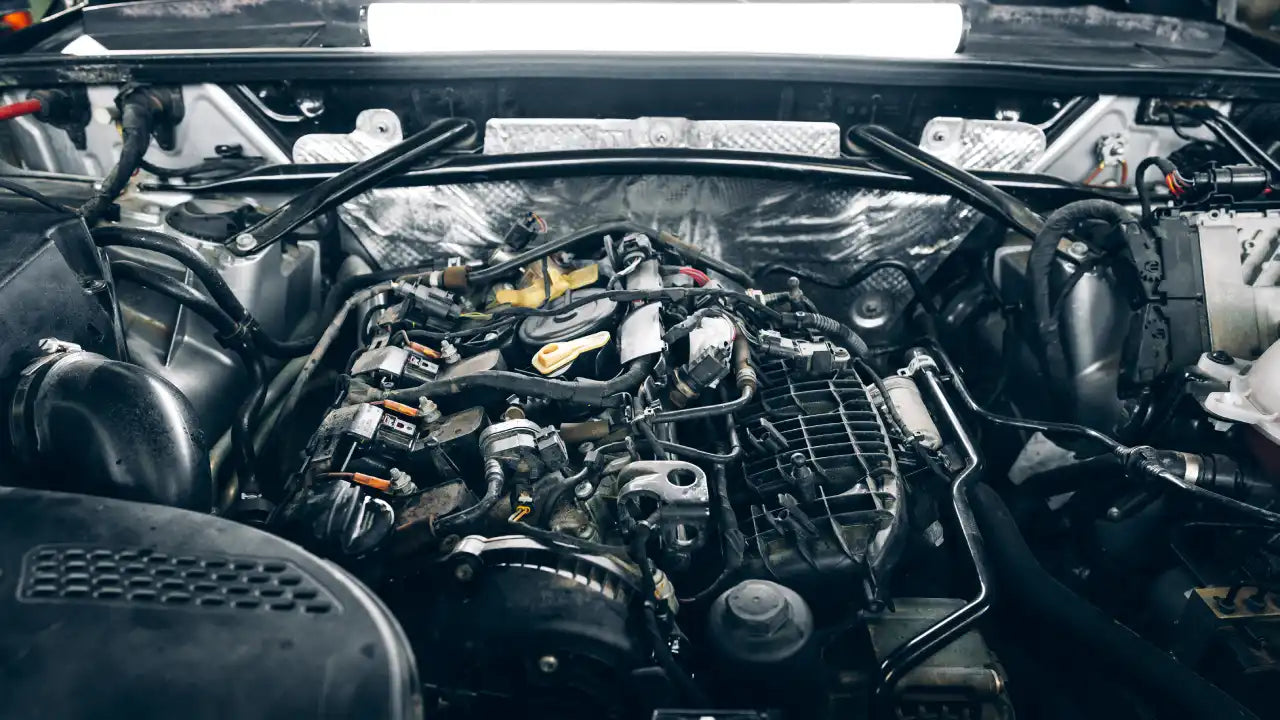Electric cars (EVs) are quickly changing how people get around, but they still need better batteries. Solid-state battery technology claims to charge batteries faster, hold more energy, and be safer. Global companies like Volkswagen, Nissan, and Toyota are investing heavily in this new idea. In this in-depth guide, we'll discuss everything about a solid-state battery, from how it works and its pros and cons to its future market.
A Brief History of the Solid-State Battery
Researchers found in the 1950s that some crystals could conduct ions, which led to the idea of utilizing a solid electrolyte. These early tests were rather basic, yet they led to new ideas. In the 1970s and 1980s, scientists looked into ceramics and polymers that might let ions travel at room temperature. Thin-film solid-state batteries were used in small devices like pacemakers, but they couldn't be made big enough for cars yet. In the 2000s and 2010s, lithium-ion batteries became standard in electronics and electric vehicles.

What About Solid-State Battery News Today?
Today, nearly every major automaker is racing to commercialize solid-state battery technology, which could change how electric vehicles are designed, powered, and used.
-
Toyota plans to launch hybrid vehicles featuring solid-state batteries by 2027-2028, focusing on faster charging and longer battery life.
-
Nissan is developing its all-solid-state (ASSB) technology and building a pilot production factory in Yokohama, Japan. The company plans to start producing large quantities of these cars by 2028 and believes that once they are produced, solid-state battery EVs will cost as much as gas-powered automobiles.
-
QuantumScape, with support from Volkswagen, showed off prototype cells that could charge from 10% to 80% in under 15 minutes. This could transform the way electric vehicles work.
-
Solid Power has started pilot manufacturing in the U.S. with BMW and Ford, which brings it closer to making batteries ready for sale.
Across the industry, momentum is accelerating. Global investment in solid-state battery R&D now exceeds $20 billion, and multiple automakers have announced pilot plants or early production lines. At this point, commercialization isn’t a question of if, but when.
When will solid-state battery EVs be available?
Experts in the industry anticipate that the initial solid-state battery electric vehicles may be available by 2027 or 2028, beginning with high-end and hybrid models. Widespread adoption is expected to occur in the early 2030s, as manufacturing becomes increasingly cost-effective. Initial iterations will likely debut in hybrid vehicles, as smaller batteries are simpler to test and oversee. In the next ten years, solid-state battery technology may become the norm in most electric vehicles. As mass production advances, solid-state batteries may:
-
Deliver 497-620 miles of range per charge
-
Enable 10-minute fast charging
-
Reduce EV weight by up to 30%
-
Last over 1000 miles before replacement

What is a Solid-State Battery?
A solid-state battery is an advanced energy storage solution that employs a solid electrolyte instead of a liquid or gel. During charging and discharging, the solid layer makes it easier for lithium ions to move between the anode and the cathode. This plan gets rid of the chance of a leak or fire. Adding lithium-metal anodes is possible, and these have a lot more energy-storing power than the graphite in lithium-ion batteries.
What is a solid-state battery made of?
Solid-state batteries are built from three main components:
-
Cathode: Typically made from lithium-based oxides such as NMC or LFP.
-
Anode: Often lithium metal, providing much energy storage capacity.
-
Electrolyte: A solid layer of ceramic, sulfide, or polymer compounds that conducts ions.
The combination results in a compact, powerful, and safer battery architecture. Also, different solid-state battery materials can be used as electrolytes, each with trade-offs:
-
Oxide-based (LLZO): Stable and safe but brittle
-
Sulfide-based (LPS): Excellent conductivity but sensitive to moisture.
-
Polymer-based: Flexible and cheaper, though less efficient at low temperatures.
Finding the perfect balance between performance, cost, and manufacturability remains the main challenge.

What are the types of solid-state batteries?
Solid-state batteries are mainly divided into bulk and thin-film types. Bulk solid-state batteries use thicker solid electrolytes, offering high energy storage suited for electric vehicles, though they’re harder to manufacture consistently. Thin-film solid-state batteries use ultra-thin layers that allow faster charging and longer cycle life, but they store less energy. These are ideal for compact electronics and wearables, while bulk designs remain the focus for future EV applications.
What is a semi-solid-state battery?
A semi-solid-state battery mixes solid and liquid components, creating a gel-like electrolyte. This hybrid approach enhances safety and performance over conventional lithium-ion designs while also simplifying the manufacturing process compared to fully solid-state cells. Companies such as CATL and NIO are investigating semi-solid systems as a bridge to genuine solid-state batteries.
How does a Solid-State Battery Work?
During charging, lithium ions travel through the solid electrolyte from the cathode to the anode, where energy is stored. When discharging, the ions move back, creating an electric current that powers the motor. Because there’s no flammable liquid inside, solid-state batteries are safer and more stable. They also reduce dendrite formation, needle-like structures that can short-circuit conventional cells.
Solid-State Battery vs. Lithium-Ion: Which is Better?
Both kinds of batteries use lithium to store and release energy, but their internal designs are different. Lithium-ion batteries use a liquid electrolyte that transports ions quickly, but it can catch fire and wear out over time. Instead of liquid, solid-state batteries use a solid electrolyte consisting of ceramic or polymer materials.
Solid-state batteries can hold more energy, charge faster, and are much safer because they are not susceptible to leaking or catching fire. They also survive longer and work better when things get tough. Lithium-ion batteries are still the most popular type of battery today because they are cheaper to make and have a well-established global supply chain. In terms of performance and safety, solid-state batteries are better, but lithium-ion batteries are still cheaper and easier to locate.

What are the advantages and disadvantages of Solid-State Batteries?
Here are the advantages and disadvantages of solid-state batteries:
Advantages of Solid-State Batteries
-
Higher Energy Density: More energy stored in a smaller, lighter package means a longer driving range for EVs.
-
Faster Charging: Solid electrolytes support higher current flow, potentially cutting charge times by half.
-
Improved Safety: No flammable liquids, no thermal runaway, and far safer than lithium-ion.
-
Longer Lifespan: Solid-state cells can endure thousands of charge cycles with minimal capacity loss.
-
Compact Design: Eliminating heavy liquid systems allows for lighter and smaller battery packs.
-
Lower Maintenance and Cooling Needs: Solid-state batteries generate less heat, reducing the need for complex cooling systems.
Disadvantages of Solid-State Batteries
-
High Manufacturing Cost: Solid electrolytes require precision manufacturing and specialized materials, driving up costs.
-
Scalability Challenges: Producing consistent, defect-free solid layers at gigafactory scale remains difficult.
-
Temperature Limitations: Some solid electrolytes work poorly in cold conditions, affecting conductivity.
-
Dendrite Growth Risk: Under certain conditions, dendrites can still form and damage the solid layer.
-
Limited Availability: Full-scale production is still 3-5 years away, so these batteries are not currently in most commercial EVs.
The Future Outlook: Environmental and Economic Impact of Solid-State Batteries
Solid-state batteries offer a cleaner and more sustainable future for electric vehicles. Switching from liquid electrolytes to solid materials removes harmful solvents, lowers fire hazards, and prolongs battery lifespan, resulting in fewer replacements and reduced waste. The increased energy density enables EVs to cover greater distances with smaller, lighter battery packs, reducing the need for raw materials and lowering overall carbon emissions.
Economically, solid-state batteries remain expensive to manufacture because of the innovative materials and intricate production methods involved. As production increases and technology advances, costs are expected to decrease significantly by the late 2020s. This change could lead to electric vehicles becoming more accessible and eco-friendly, propelling significant progress in environmental stewardship and energy efficiency throughout the automotive sector.













